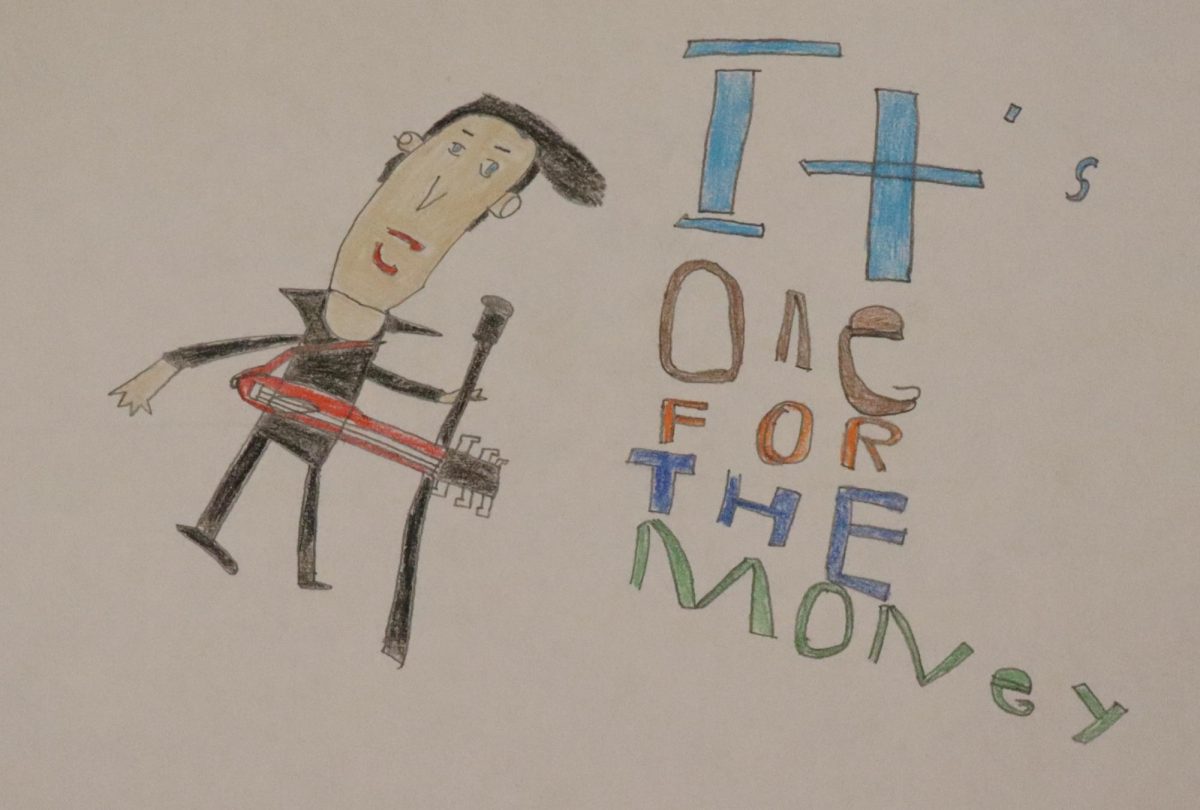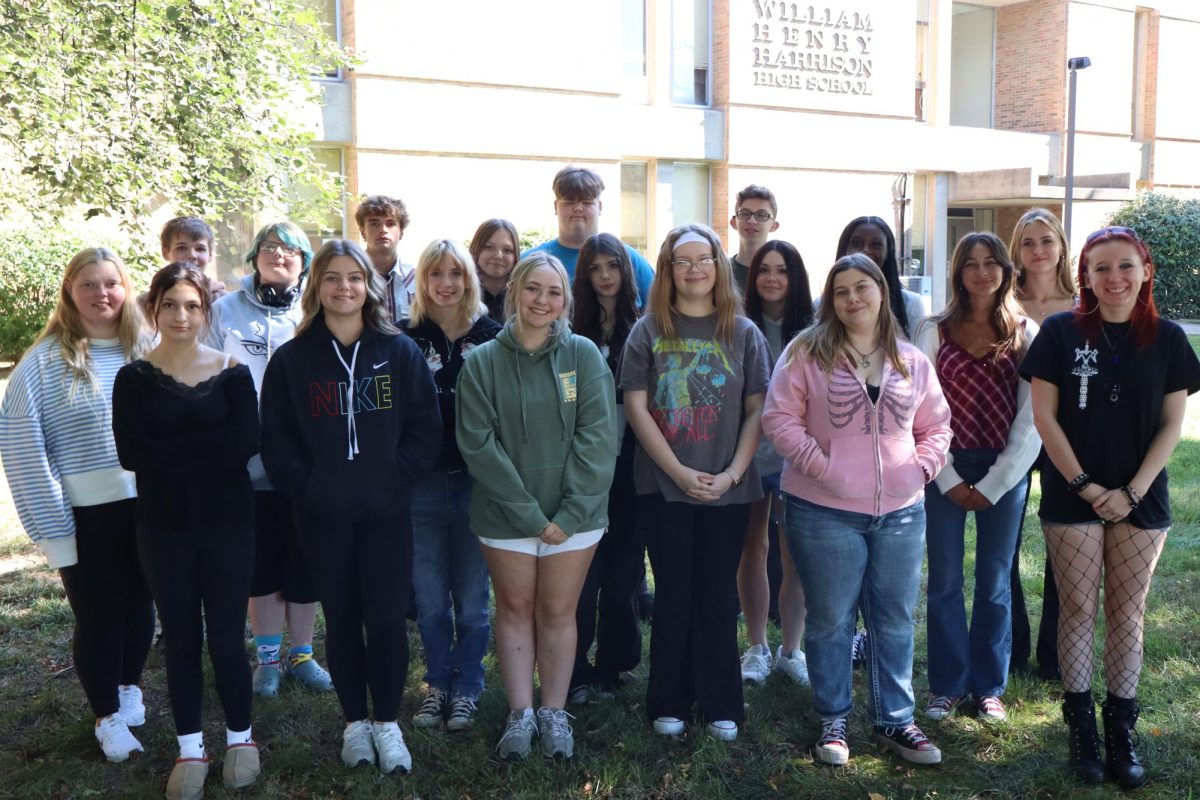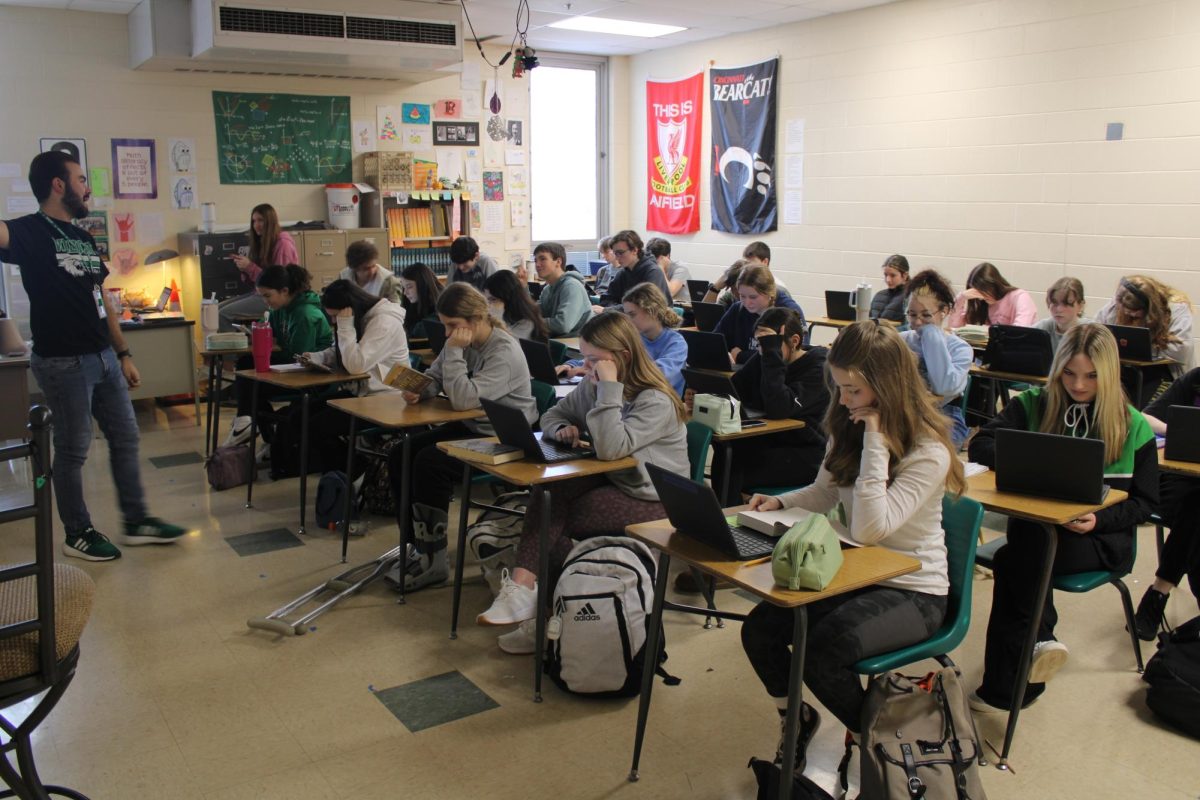This article expresses two points of view on the issue of technology and children, they have been listed in alphabetical order by the author’s last name.
Against technology for children by: Joey Russel
Children and teens are becoming increasingly addicted to technology- and your concern should be rising faster than their screen time. Screen time must be limited due to the many negative effects that technology inflicts on its users, especially children and teens.
Over the years technology has advanced immensely, leading to an increased reliance on it in younger generations. Textbooks are becoming a thing of the past, with most students nowadays preferring Google or other search engines. This reliance not only causes students to be more influenced by technology, but it also means they think less independently.
Why is this a concern? The more a student relies on technology, the higher dependency they have on it. So, when it is not available in the real world, or for things such as standardized tests, this leaves the student to rely on their own personal knowledge, which is now limited due to their dependency on technology. Students are becoming unable to think independently without technology.
This also leads to cheating, which is a major problem in this generation. Students have total internet access at their literal fingertips. Things like Mathway, Sparknotes, and Quizlet are now used to complete assignments, rather than information students learned, or rather, didn’t learn in class. Students know they can find assignment answers online, leading them to ignore teachers and textbooks.
Not only does technology affect students’ academic performance, but it also can create safety risks. Issues such as cyberbullying and online grooming are threatening the safety of children online.
“A person is more likely to say things to you online versus in person,” a Harrison High School student confessed, “being behind a screen gives you more confidence to say whatever you want, plus you can always delete it and not have a paper trail.” This is unsettling. Not only does cyberbullying cause students to become depressed or frightened, but it can also increase the likelihood of self-harm. According to the National Bullying Prevention Center, “15% of students have reported that they have been cyberbullied.” While 15% may not seem like much, that’s approximately 1 out of every 7 people. Cyberbullying is a serious problem, and the ever more prominent role that social media plays in the lives of children and teens is only going to compound the issue.
Furthermore, social media is essentially becoming a playground for child predators. In one report from the Child Crime Prevention and Safety Center, over 500,000 child predators are active online each day. Furthermore, these predators target children and teens, with one stat even showing that over half of the victims of online sexual exploitation are between twelve and fifteen. Clearly, social media is creating real safety risks for a group of people incredibly susceptible to the dangerous tactics used by online predators.
Social media poses a mental health risk to adolescents due to cyberbullying, but also the pressure it places on them to conform and keep up with trends. One senior, Josie Murray, shared that, “Using social media helps me to keep up with trends and fit in with what is new and popular with my generation at any given time.” While this may seem helpful, it also creates major problems. The use of social media is pressuring for students, because they feel that they need to follow the trends that everyone else is following in order to fit in. The adage “keeping up with the Jones” comes into play here, and while this became popular in 1913, it has only become worse with the help of technology. Things like Tik-Tok videos and Snapchat stories, specifically “hauls” influence its users heavily. Every time a new trend or product appears, thousands of people strive to follow it, therefore making those who do not feel excluded or inferior. The seclusion is a major reason why people fear not following the trends. Even worse- reminders of these trends and pressures are everywhere. Pressure to conform is present in both real-life interactions and the online world many adolescents find themselves living in, meaning that for people drowning under the weight of these expectations, reaching the surface seems unachievable.
Another standard that the use of social media influences is body image. Users, typically female, see famous people looking a certain way and then feel obligated to look the same, as these celebrities become the model for beauty standards. However, many of these standards are unachievable, leading to self-esteem issues for many young girls on social media.
Social media puts pressure on relationships as well. Some couples feel the need to act the same way as those they see on social media platforms, which is unrealistic. The image that influencers present on social media is carefully crafted- and real couples can’t expect to live up to the picture-perfect love that influencers flaunt.
Technology is booming, and so are the negative effects it bestows upon its younger users. Things like academic reliance on technology, risk of self-harm, and unrealistic goals and standards are magnified when technology comes into play. When deciding if this is a good idea for younger users, the obvious answer is no. It is unrealistic to be able to always use or rely on technology, and we shouldn’t continue to allow younger generations to depend on it. Relying on something too much it can hinder the way you process things and may cause a person to think they cannot rely on themselves, creating learned helplessness. Technology and social media is posing a serious threat for children and teens, and serious action must be taken to protect the future generations.
For technology for children by: Katie Schaefer
“Hey kids! Get off your phones!” How often do we hear that? How about we say “Hey grownups, mind your business!” Phones, and specifically social media, aren’t all that bad for teens, and here’s why.
With the popularity of social media increasing every day, discussions surrounding social media are crucial to acknowledge its positive influence on kids and young adults. Differing from common claims, these digital platforms offer opportunities for adaptable growth and development among younger generations. Despite large amounts of controversy surrounding social media, these digital platforms, such as Instagram and TikTok, help kids much more than they hurt kids through improved communication and a space for self-expression.
Improved communication is one recognisable benefit. Engaging with friends on these devices encourages younger audiences to express thoughts, opinions, and emotions. These virtual interactions contribute to better communication skills in face-to-face scenarios, which will help develop healthier and stronger relationships. Communicating online also works as a supportive network for younger audiences navigating challenges. Online communities provide spaces where people can share experiences, seek advice, and find safety and comfort in the understanding of peers facing similar circumstances. This sense of virtual friendly relationships can play a large role in helping mental well-being. In terms of digital citizenship, communicating on social media contributes to a sense of responsibility and appropriate behavior. Adolescents learn to explore the internet with an awareness of the consequences of their online actions, promoting respectful and responsible digital behavior.
Furthermore, social media serves as a large space to be yourself, show off skills, and learn new things. Beyond basic self-expression, children can learn new artistic and musical talents, along with other forms of creative articulation. The positive reinforcements received from comments and likes contributes to strengthening self-esteem and senses of achievement. The connectivity of the internet and social media boosts these abilities to show off and learn skills, as well. Children connect with peers from diverse backgrounds, promoting cross-cultural interactions and expanding their view of the world. This exposure contributes to the development of empathy, tolerance, and an appreciation for diversity. Along with this connectivity, social media becomes an additional source of knowledge and skill development. Many platforms offer educational content, interactive tutorials, and collaborative spaces, providing adolescents with opportunities to expand their education beyond their classrooms. This digital learning environment encourages independent exploration and critical thinking skills.
Many may say there aren’t as many positives to children using social media as there are negatives. This is agreeable due to various reasons such as concerns for safety and bad influences. Everyday, people hear about online predators and misinformation being spread. Although all of this is true, it can all be taken care of by app and website developers if they strengthen the security of their creations.
The benefits of social media are overlooked. People often broadcast all of the negative activities on the internet and how nothing and nobody can be trusted, but they never talk about who and what can be trusted. There is plenty of expert-verified information that can be found on the internet and social media. Therefore, people who believe there aren’t positives of social media can easily be proved wrong.
In conclusion, when utilized correctly and responsibly, social media is a great facilitator of positive growth and development among children and young adults. It exceeds its often-criticized role, serving as a dynamic tool for communication, creativity, education, global connectivity, and the cultivation of responsible digital citizens.




























